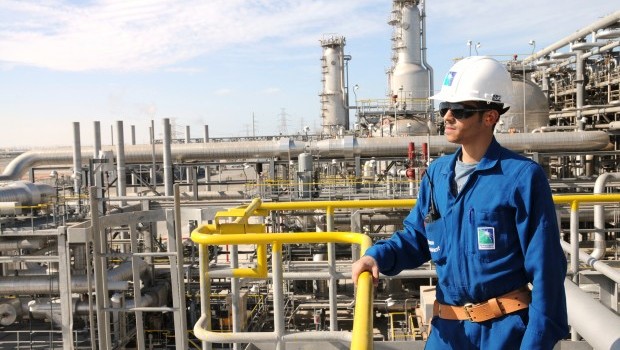He said Saudi Aramco, the largest oil company in the world, will enter the race to explore shale oil and gas.
Saudi oil expert Rashed Aba Nami and Kuwaiti oil expert Kamil Al-Harmi told Asharq Al-Awsat that the announcement confirmed analyses that Saudi Arabia was continuing its policy of seeking to retain its position as a key player in global energy supplies.
The latest announcement follows on the heels of predictions, first made in 2012, that the United States would no longer require imports of Middle East oil by 2017, and it would enter the era of self-sufficiency and export. Additionally, this year it was announced that the United States has overtaken Saudi Arabia and Russia in the volume of production from its shale gas reserves.
Aba Nami said the announcement that Saudi Arabia was no longer in first place in global oil production had economic and political dimensions which ensured the kingdom was serious about pursuing shale oil and gas exploration.
Harmi, meanwhile, said Saudi Aramco’s announcement was a confirmation that it would enter the race to exploit shale gas reserves with its full weight.
Aramco is the first of the world’s major energy companies to announce plans to invest in this field. Most companies which explore for shale oil and gas are relatively small players in the global energy market, with major companies cautious because of the perceived environmental and production problems, and worries about causing a glut in hydrocarbon supplies and an accompanying drop in prices.
Aba Nami, however, said the new plans likely focused on “non-associated” gas.
The bulk of Saudi gas production is extracted from oil wells, and is known as “associated” gas. Despite the large quantities produced and the fact that Saudi Arabia occupies fourth place in the world in gas production, it still does not meet domestic market needs with its existing production.
Aba Nami added that even before the emergence of shale oil and gas, Saudi Arabia was looking for increasing its non-associated gas reserves, at the forefront of which is the King Abdullah initiative to explore gas in the Rub’ al Khali [Empty Quarter] area in southern Saudi Arabia.
Harmi said Saudi’s plans for shale gas made economic sense, because its production level did not meet domestic market demands. The domestic market, at its peak in June to September, uses the equivalent of 4 to 4.2 million barrels. Most of this gas is used to produce electricity, and is used in water desalination.
Harmi said “the Saudi market is thirsty for more energy and is growing fast and the only solution is more shale gas exploration.” The Kuwaiti oil expert added that the Saudi Arabian Minister of Petroleum and Mineral Resources, Ali Al-Naimi, announced in May that Saudi Arabia would keep to its oil production ceiling of 12.5 million barrels per day until 2020. Harmi said that meeting this pledge may require increasing production of conventional oil from current and future fields.
Harmi added that “the leap which was achieved by the US in overtaking Saudi Arabia and Russia will make many countries which have no investment in oil production try the experiment.” He expected Saudi Arabia to set aside funds from its investments for the new project in order to remain close to any developments within the field.
Aba Nami said Saudi Arabia was driven by domestic market needs and will explore gas in the northern and northwestern areas of Saudi Arabia, though production of associated gas would be very costly, especially if accompanied by heavy oil.
Aba Nami said Saudi Arabia entered the associated gas production in 1981 and placed a tariff of 70 cents per 1,000 cubic meters. This tariff is still in place and according to Aba Nami is not viable economically, because the real cost of production is more than USD 2 and may even reach USD 3.
This subsidized gas is used domestically in producing electricity, desalinating water and in the petrochemical industries, and demand from the domestic market is very high.
He added that the dry gas which was discovered in the northern Saudi Arabian fields may be a gas with a high cost of production, which means prices in the domestic market may change in future.


Trackbacks/Pingbacks